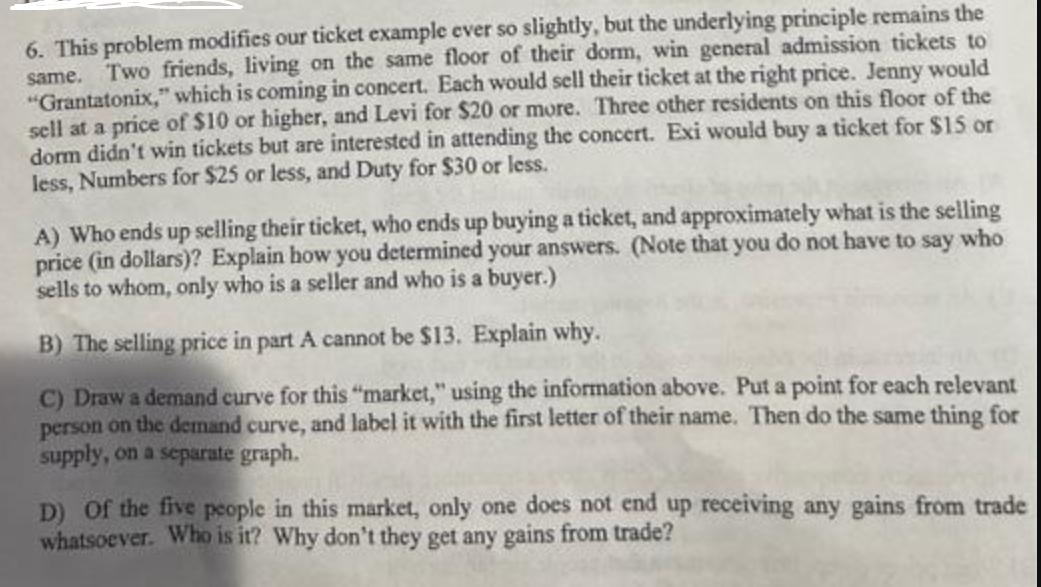Answered step by step
Verified Expert Solution
Question
1 Approved Answer
6. This problem modifies our ticket example ever so slightly, but the underlying principle remains the same. Two friends, living on the same floor

6. This problem modifies our ticket example ever so slightly, but the underlying principle remains the same. Two friends, living on the same floor of their dorm, win general admission tickets to "Grantatonix," which is coming in concert. Each would sell their ticket at the right price. Jenny would sell at a price of $10 or higher, and Levi for $20 or more. Three other residents on this floor of the dorm didn't win tickets but are interested in attending the concert. Exi would buy a ticket for $15 or less, Numbers for $25 or less, and Duty for $30 or less. A) Who ends up selling their ticket, who ends up buying a ticket, and approximately what is the selling price (in dollars)? Explain how you determined your answers. (Note that you do not have to say who sells to whom, only who is a seller and who is a buyer.) B) The selling price in part A cannot be $13. Explain why. C) Draw a demand curve for this "market," using the information above. Put a point for each relevant person on the demand curve, and label it with the first letter of their name. Then do the same thing for supply, on a separate graph. D) of the five people in this market, only one does not end up receiving any gains from trade whatsoever. Who is it? Why don't they get any gains from trade?
Step by Step Solution
There are 3 Steps involved in it
Step: 1
A Sellers Jenny and Levi end up selling their tickets Buyers Exi Numbers and Duty end up b...
Get Instant Access to Expert-Tailored Solutions
See step-by-step solutions with expert insights and AI powered tools for academic success
Step: 2

Step: 3

Ace Your Homework with AI
Get the answers you need in no time with our AI-driven, step-by-step assistance
Get Started


